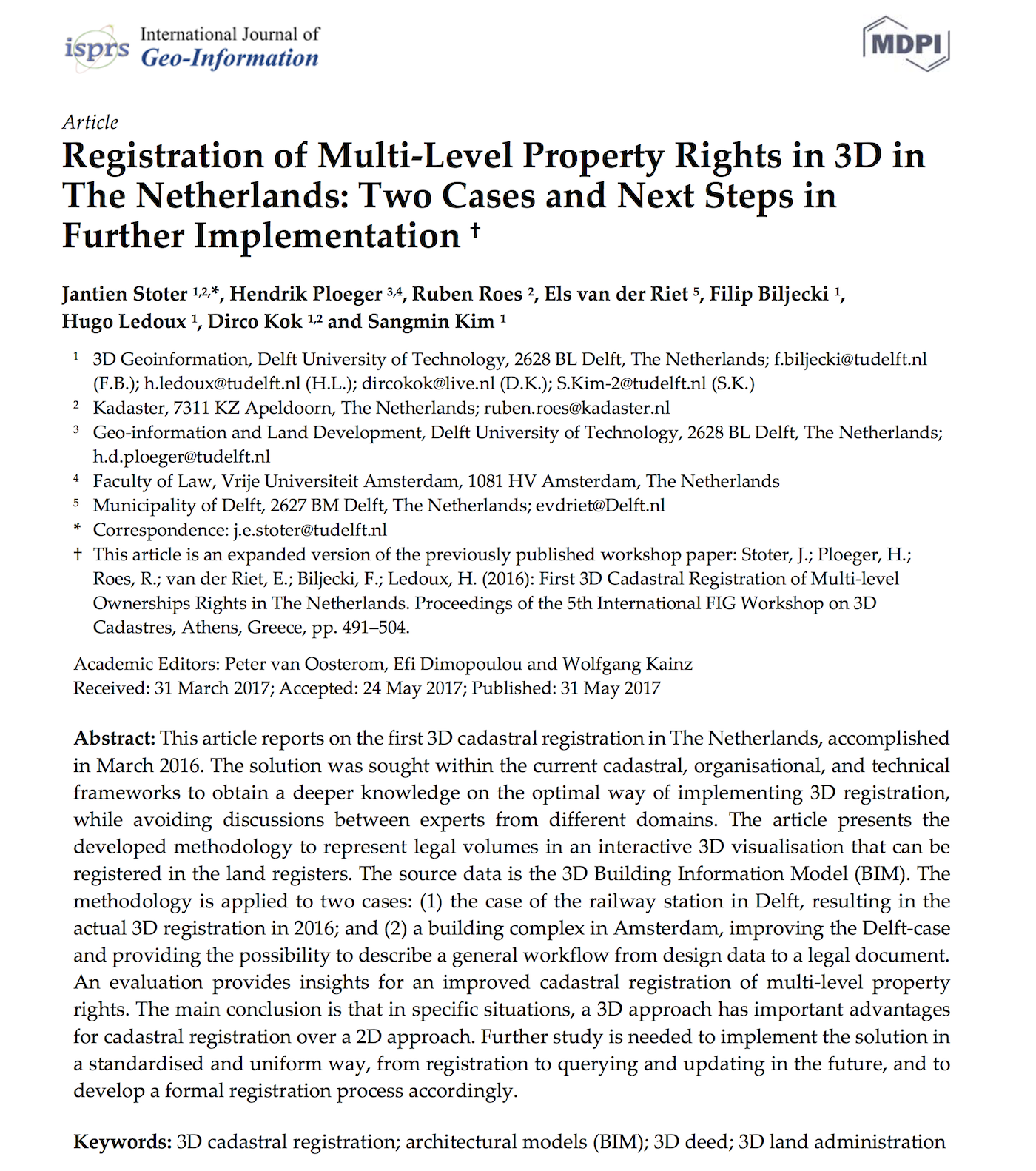Journal paper on the first 3D cadastral registration in the Netherlands
May 31, 2017
We published a new paper:
PDF DOI BibTeX
@article{Stoter17a,
Author = {Stoter, Jantien and Ploeger, Hendrik and Roes, Ruben and van der Riet, Els and Biljecki, Filip and Ledoux, Hugo and Kok, Dirco and Kim, Sangmin},
Title = {Registration of Multi-Level Property Rights in 3D in The Netherlands: Two Cases and Next Steps in Further Implementation},
Doi = {10.3390/ijgi6060158},
Journal = {ISPRS International Journal of Geo-Information},
Number = {6},
Pages = {158},
Pdf = {http://www.mdpi.com/2220-9964/6/6/158/pdf},
Volume = {6},
Year = {2017}
}This article reports on the first 3D cadastral registration in The Netherlands, accomplished in March 2016. The solution was sought within the current cadastral, organisational, and technical frameworks to obtain a deeper knowledge on the optimal way of implementing 3D registration, while avoiding discussions between experts from different domains. The article presents the developed methodology to represent legal volumes in an interactive 3D visualisation that can be registered in the land registers. The source data is the 3D Building Information Model (BIM). The methodology is applied to two cases: (1) the case of the railway station in Delft, resulting in the actual 3D registration in 2016; and (2) a building complex in Amsterdam, improving the Delft-case and providing the possibility to describe a general workflow from design data to a legal document. An evaluation provides insights for an improved cadastral registration of multi-level property rights. The main conclusion is that in specific situations, a 3D approach has important advantages for cadastral registration over a 2D approach. Further study is needed to implement the solution in a standardised and uniform way, from registration to querying and updating in the future, and to develop a formal registration process accordingly.
The paper is freely available at the journal (open access).
